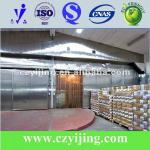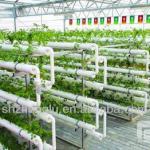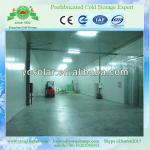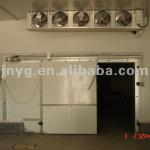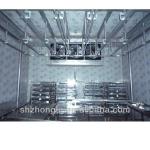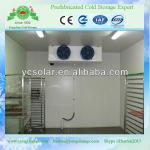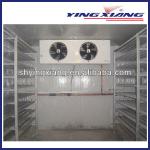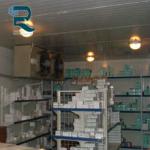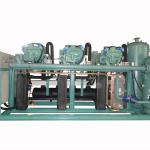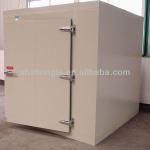Cold Storage Room For Onion
| Condition:New | Temperature:0 Celsus Degree | Place of Origin:Jiangsu China (Mainland) | Brand Name:YIJING |
| Voltage:380 |
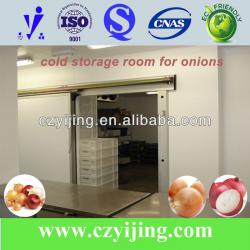
JUST ANSWER AS MUCH AS POSSIBLE! ANY HELP, CONTACT US!
1: What's your company's name and detailed contact information please?
2. Which country and which city the cold room(warehouse) located?
3. Cold room being installing inside the building or outside the house?
4. What is the ambient temperature (°C)
5. Inside dimension of the cold room(preferably with design drawings)?(m)
6. What kind of products is gonna store in the room?
7. The material of cold room panel;(Including the wall panel, floor and roof panel)
8. The thickness of cold room panel;(Including the wall panel, floor and roof panel)(mm)?
9. Required temperature range inside the cold room (°C)?
10. How much kilograms of products put in cold room per once(kg/once)?
11. Original temperature of products before put into the cold room(°C)
12. Within how many hours to cool the products down to the request temperature?(12 hours or 24 hours)
13. Which refrigerant required for the refrigeration unit?(R22 or R404)
14: If possible, please provide a photo where the cold room going to be installed.
Quality Characteristics and Criteria: High quality onions should have mature bulbs with good firmness and compactness of fleshy scales. The size, shape and color of the dry skin should be typical for the variety. They should be free of mechanical or insect damage, decay, sunscald injury, greening of fleshy scales, sprouting, bruising, doubles, bottlenecks (onions which have abnormally thick necks with only fairly well developed bulbs) and any other defects.
Horticultural Maturity Indices: Harvest maturity depends on the purpose for which they are grown. Onions intended for storage should be harvested when 50 to 80% of the tops have fallen over and bulbs are mature with a thin neck. Yields are higher when harvested after the tops are completely dry, but bulbs tend to have a shorter storage-life. To hasten maturity, tops can be rolled with a light roller when 10% of tops have fallen. About 7 days prior to lifting, bulbs can be undercut by a blade. Such onions should not be used for long-term storage. Onions for bunching can be harvested from pencil size until they have proper bulb size.
Pre-cooling Conditions: In order to maintain high quality, bunched green onions should be pre-cooled to < 4 °C (29 °F) within 4 to 6 h of harvest. Hydro-cooling, forced-air cooling and vacuum-cooling are used with crushed ice over the product to maintain temperature and moisture.
Dry onion bulbs for long-term storage should be pre-cooled to 0 °C (32 °F) immediately after drying,
or within 1 mo using cool outside air. The pre-cooling method affects storability. Rapid pre-cooling inhibits rooting and sprouting during storage. Natural cooling (slow) has a positive effect on storability when onions have a long rest period and weather conditions are good for curing. Gradual cooling at 1 °C (1.8 °F) per day in storage is less effective at inhibiting sprouting and rooting than rapid cooling
Optimum Storage Conditions: Bunched green onions can be stored 3 to 4 weeks at 0 °C (32 °F) with 95 to 98% RH. Under these conditions, bunched onions stored in polyethylene-lined containers and top-iced maintain excellent quality for 1 mo. Storage-life decreases to 1 week if the temperature is 5 °C (41 °F), and rapid yellowing and decay of leaves occurs at higher temperatures.
Pungent, dry onions can be stored for 6 to 9 mo at 0 °C (32 °F) with 65 to 75% RH. High RH induces root growth, while high temperature induces sprouting. A combination of high temperature and high RH increases rotting and decreases quality. Storage below the freezing point of -1 to -2 °C (30 to 28 °F) is recommended in Europe. Mild type or sweet onions can be kept for 1 to 3 mo; they are stored in common storage with cool, circulating ambient air or in refrigerated cold rooms. Onions grown from seed store better than those grown from sets or transplants.
After harvest, onion bulbs enter a state of rest for a period of 4 to 6 weeks, depending on cultivar and weather conditions during growth. Maleic hydrazide, a sprouting inhibitor, is often used to prevent root growth and sprouting during long-term storage. It is applied 2 weeks before harvest, when bulbs are mature and 50% of tops are down. But, onion plants must still have five to eight green leaves in order to absorb and translocate the sprout inhibitor to bulbs.
Onions intended for storage should be dried well and cured in the field, under sheds, or in storage. After 2 weeks of field drying, onions can be transferred to storage rooms for final drying and curing. Forced-air ventilation at 25 to 27 °C (77 to 81 °F) using outside or heated air is commonly used to dry onions. Onions can be stored and dried on the floor in bulk 3 to 4 m deep or in 500 to 1000 kg (1,100 to 2,200 lb) boxes. Drying is complete when the onion neck is tight, outer scales are dry and make a rustling noise when touched, and the skin color is uniform. Weight loss of 3 to 5% can occur during drying. Losses from neck rot are reduced by rapid drying immediately after harvest. After drying and curing, the temperature should be lowered gradually to the normal seasonal temperature, or bulbs can be pre-cooled in cold storage at 0 °C (32 °F). In either case, condensation should be avoided as it encourages rot and changes the color of the dry skin.
In most European countries and in the northern U.S., onions are stored in common storage, using cool, ambient air to maintain optimum temperature and RH. In this condition, onions are usually stored only until the end of March or beginning of April, since further storage can cause losses due to sprouting and rotting.
Refrigerated storage is used for onions that are to be marketed in late April to early July. For cold storage, onions are usually packed in crates or containers. Air circulation must be sufficient to maintain a constant temperature and remove moisture from inside storage containers. Onions packed in sacks can only be stored for a limited period of time, about 1 mo, since air movement through sacks is insufficient to maintain proper storage conditions. When stored below - 1 to -2 °C (30 to 28 °F), onions should be thawed at 5 °C (41 °F) for 1 to 2 weeks before they are removed from storage. Rapid thawing damages onion bulbs.

| Packaging Detail:Panel packaging: Corners are wrapped and protected by designed carton boxes, after the panels are taped by WHITE heavy duty plastic film.Cold room doors: same packaging as cold storage panels.Condensing Units: Customized wooden box.Evaporator: packaged by customized wooden box.Cold room accessories: all cold room accessory parts are packaged in a customized wooden box. |
| Delivery Detail:Negotiate by both parties |



